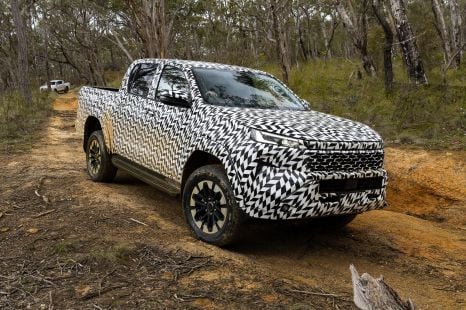

Paul Maric
2026 Toyota HiLux review: Prototype drive
1 Month Ago
If you've just bought a new dual-cab ute or an SUV and there are controls for the four-wheel drive system, would you know what to do with them? We run through the basics of 2H, 4H, 4L, hill descent control and differential locks.
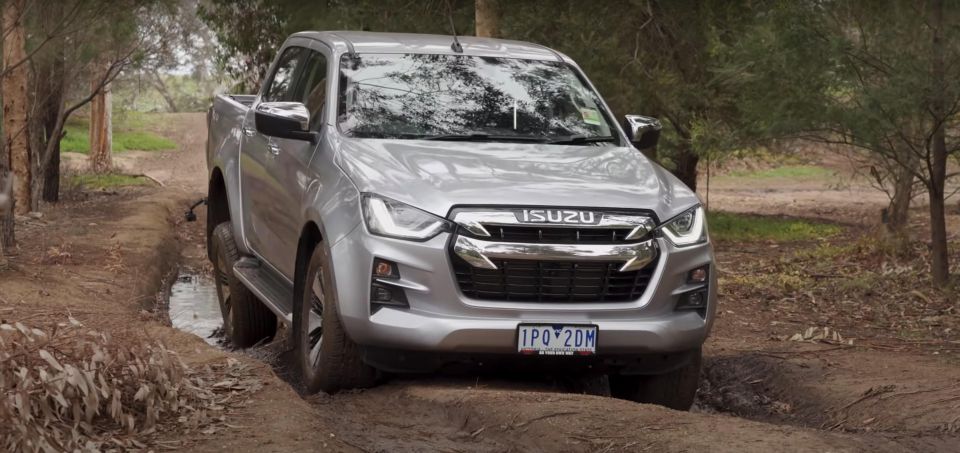
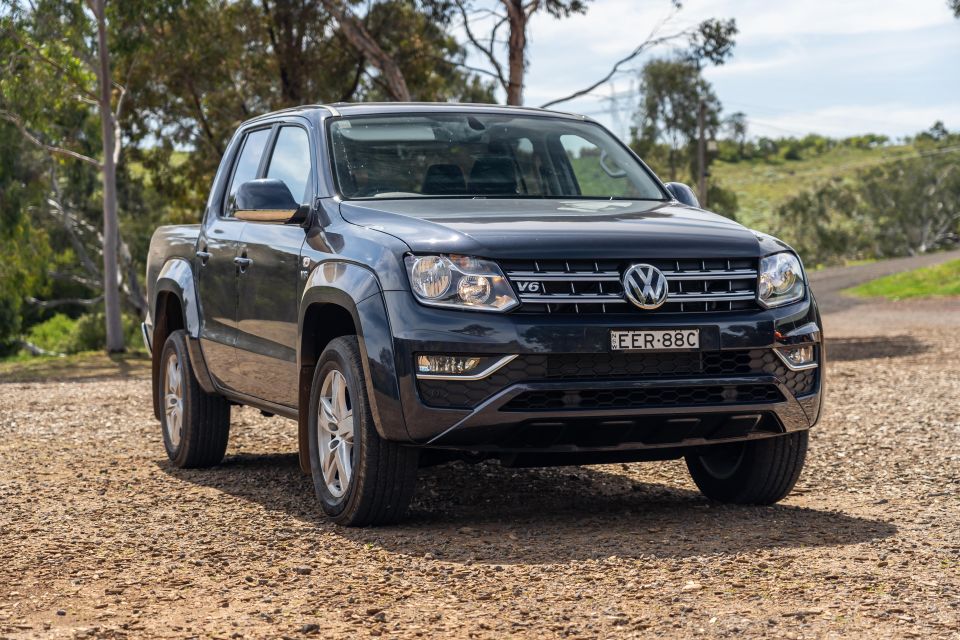

Founder

Founder


Founder

Founder
Where expert car reviews meet expert car buying – CarExpert gives you trusted advice, personalised service and real savings on your next new car.
So you’ve just taken delivery of your new dual-cab ute or a spiffy new SUV, but you’ve got no idea what all the four-wheel drive controls do or how they work.
Here’s a very basic explainer for beginners wanting to head away on their first camping trip or drive through the bush.
If you’re an off-roading pro you may find some of these explanations no brainers, but it’s always worth brushing up on your skills.
In this guide we’ll run through two-wheel drive, four-wheel drive (both high- and low-range), the rear differential lock, hill descent control, in addition to some basics.
If we’ve missed anything or you want to add your two cents, make sure you leave a comment at the bottom of the story.
We’re using the Isuzu D-Max for this guide but we won’t be reviewing it in this video or this piece of content – you can read our detailed 2021 Isuzu D-Max review here.
Every ute or SUV is different, but the D-Max covers all the basics. Your vehicle may build on these controls with custom settings, but the D-Max covers off all the basics. So, let’s get started.
Most four-wheel drive dual-cab utes on the market are daily driven in two-wheel drive (rear-wheel drive), with four-wheel drive modes used for off-road driving.
The exception to this rule are vehicles like the Volkswagen Amarok or the Mitsubishi Triton. The Amarok has permanent all-wheel drive, while the Triton offers a system that allows the use of four-wheel drive on sealed surfaces.

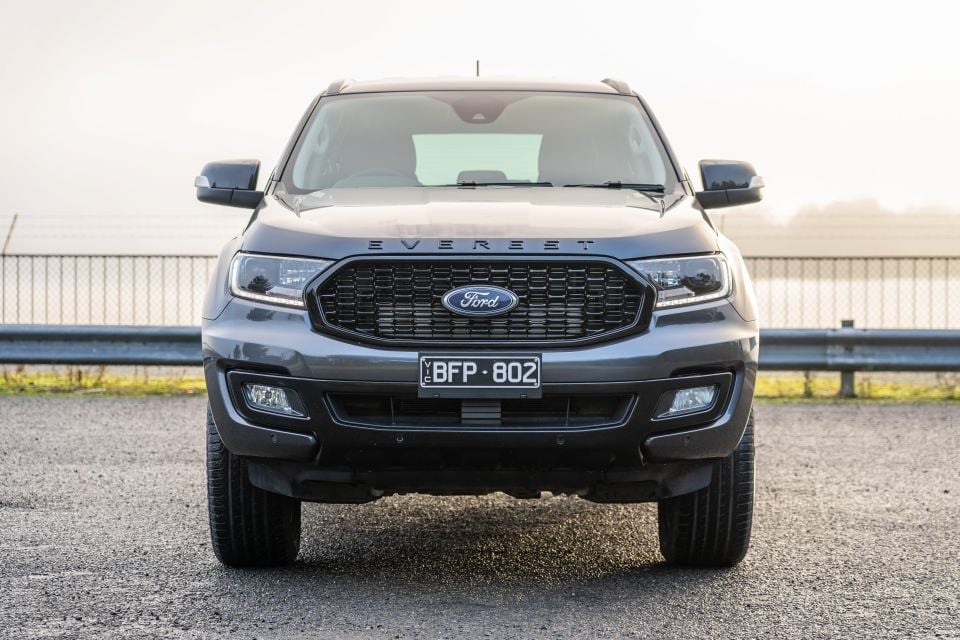
We’ll explain a little later why you can’t just set your new daily-driven two-wheel drive ute to four-wheel drive constantly, especially on sealed surfaces.
Most all-wheel drive SUVs on the other hand offer an on-demand all-wheel drive system, or a permanent all-wheel drive system that’s capable of working across all surfaces.
An on-demand system works as a two-wheel drive most of the time, only engaging its second axle when slip is detected on the first axle. Some of these SUVs have a setting that locks them in a permanent four-wheel drive mode.
If you’ve just bought a new dual-cab ute, it’s likely to be regularly driven in two-wheel drive. In most cases those two wheels will be the rear wheels.
This means that your ute acts as a rear-wheel driven vehicle with an open differential, or a limited-slip differential, with a set of traction controls to prevent wheel slip.
When driven off-road, this is the mode that’s going to offer the least traction. That’s because when one of the rear wheels leaves the ground, an open differential follows the path of least resistance. In the case of a wheel off the ground, it will be that wheel that receives all of the engine’s available torque.
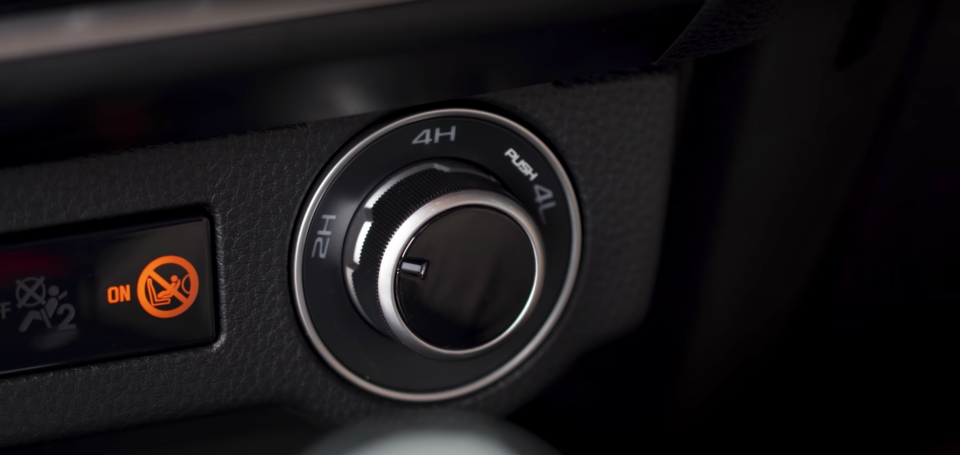

Traction control will kick in and in some cases this is enough to pulse torque to the wheel with more traction, which can result in the vehicle becoming unstuck.
Switch traction control off and the wheel off the ground is likely to just spin, meaning the car won’t move forwards. But this situation can be solved with a rear differential lock.
Depending on the ute, a rear differential lock can be used in two- and four-wheel drive modes and generally only up to a certain speed.
A rear differential lock is designed to split torque on the rear axle so 50 per cent is directed to each wheel.
A differential lock is designed to ensure one wheel can’t rotate on its own without the other wheel rotating at the same speed. If you find yourself with a wheel is off the ground, engaging the rear differential lock will ensure the wheel that’s still grounded (and has traction) allows the vehicle to move.
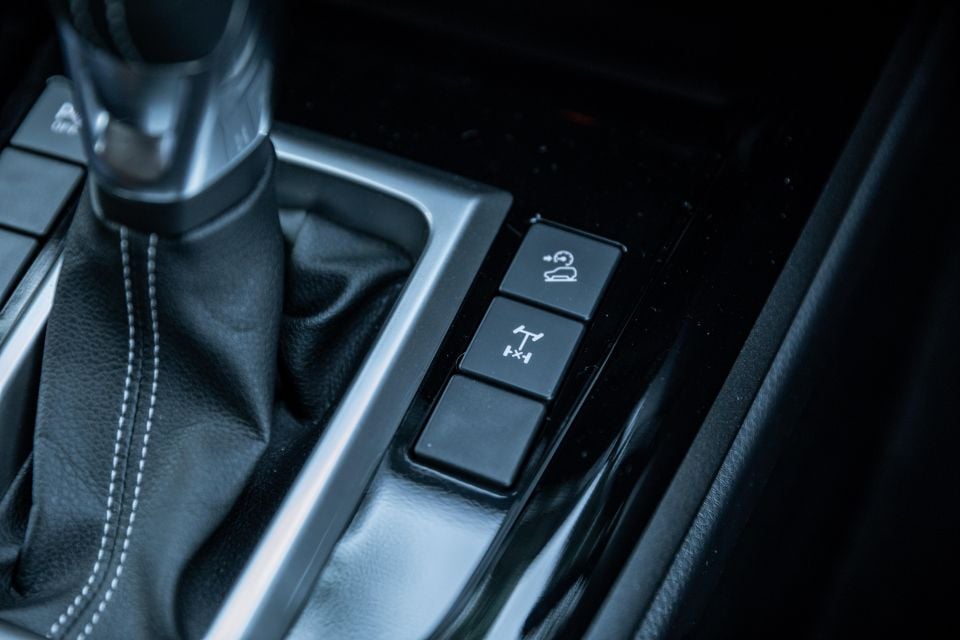
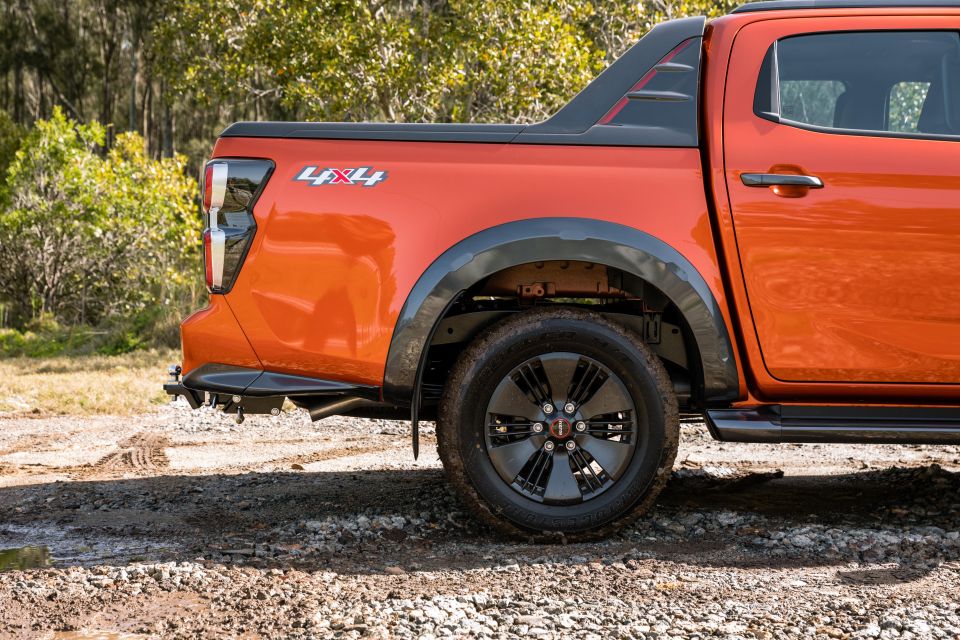
Keep in mind that you generally won’t be able to engage a rear differential lock when you’re already stuck.
The vehicle needs to be able to move under power for the differential lock to engage, so always make sure you’ve enabled it before tackling rough terrain.
The rear differential lock is activated using the button that looks like a cross on the rear axle of the line diagram of your vehicle’s drivetrain.
Four-wheel drive high range is a mode that can generally be enabled on a dual-cab ute at speeds up to around 100km/h.
The vehicle needs to be in gear and – once the button is pushed, the knob is turned, or the switch is flicked – the front axle engages and is used to send torque to the road.
This is done by virtue of a centre differential lock, clutch pack, or centre/front differential. Once engaged, it splits engine torque 50/50 between the front and rear axles. In this mode there generally isn’t any cross-axle locking unless it is manually activated.

That means if you have one front and one rear tyre off the ground, you will struggle with traction.
In this mode traction control also works to help modulate torque across the axles, but in some situations it won’t be enough to move a stuck vehicle.
High-range four-wheel drive can sometimes be used in conjunction with the rear differential lock for additional traction. Engaging the rear differential lock means the torque sent to the rear axle will be split 50/50 between the rear wheels.

That means each wheel on the rear axle gets 25 per cent of available engine torque, with the other 50 per cent is sent to the front axle.
In this mode, the vehicle continues to use the standard transmission that’s also used in the two-wheel drive mode.
Next up is low-range. Instead of using the vehicle’s regular transmission, a low-range transfer case offers tighter gear ratios and a gear or belt driven system to adjust wheel speeds in relation to engine speeds.
This transfer case is designed to offer torque in a tighter rev band in a more controlled manner. The vehicle is able to use the tighter rev band to limit speed through engine braking.
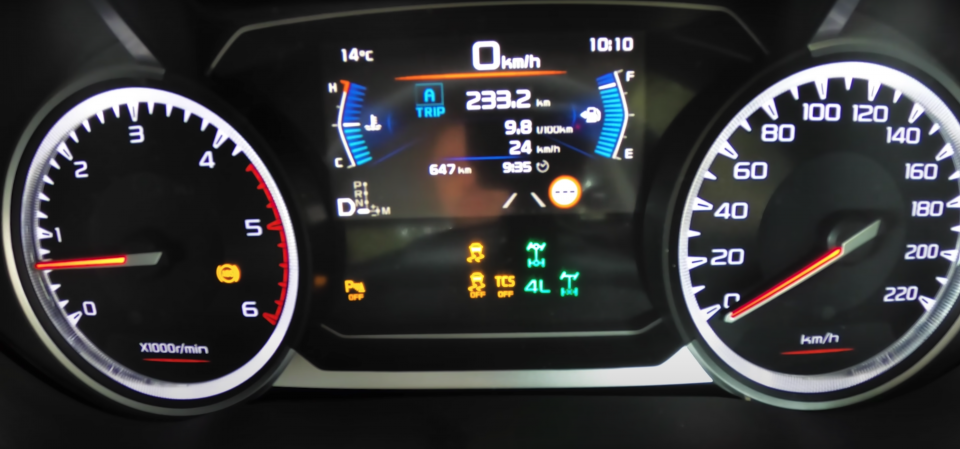

Low range helps limit sudden surges of torque and the tighter ratios make it useful for long, steep descents by reducing reliance on mechanical brakes.
It’s the same story going up a steep hill, where a narrow torque band means the driver won’t experience sudden or uncontrolled surges of torque under throttle.
To engage low range, the vehicle needs to be in neutral and you’ll often hear a clunk as it switches within the transfer case.
This mode will also often disengage stability control, traction control and/or ABS to offer ultimate control.
As technology evolves, manufacturers have created new ways to make off-roading easier for drivers.
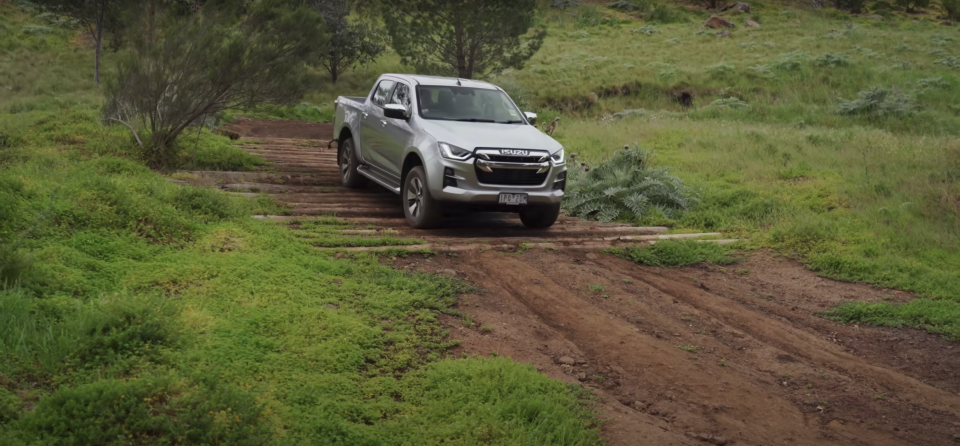
Hill descent control aims to emulate low-range mode for steep descents by using sensors from the traction control and ABS system to control a car’s speed downhill.
This mode gradually pulses the brake on each individual wheel to limit descent speed. Depending on the vehicle, the driver can customise the speed – and in some vehicles the hill descent control feature also works in reverse.
There’s a caveat to using four-wheel drive controls on sealed surfaces.
While the downside of an open differential off road is lack of traction when a wheel is off the ground, an open differential is required on sealed surfaces for a car to easily turn.
Why? That’s because when a car turns, each wheel moves at a slightly different rate – the turning radius of a wheel is dictated by the size of its arc.

The size of its arc is determined by how much steering input there is. As a result, if you have the rear differential locked, for example, you’re asking the inside wheel to turn at the same speed as the outside wheel.
This results in the car attempting to rotate the wheel on a sealed surface where it can’t overcome friction. As a result, it puts stress on the driveline as it attempts to turn the wheel on the spot, but can’t.
A similar issue exists when the car is in four-wheel drive mode. You’re asking the front axle to turn at the same speed as the rear axle (as torque is split 50/50 between the front and rear of the vehicle in 4H) and the same thing happens.
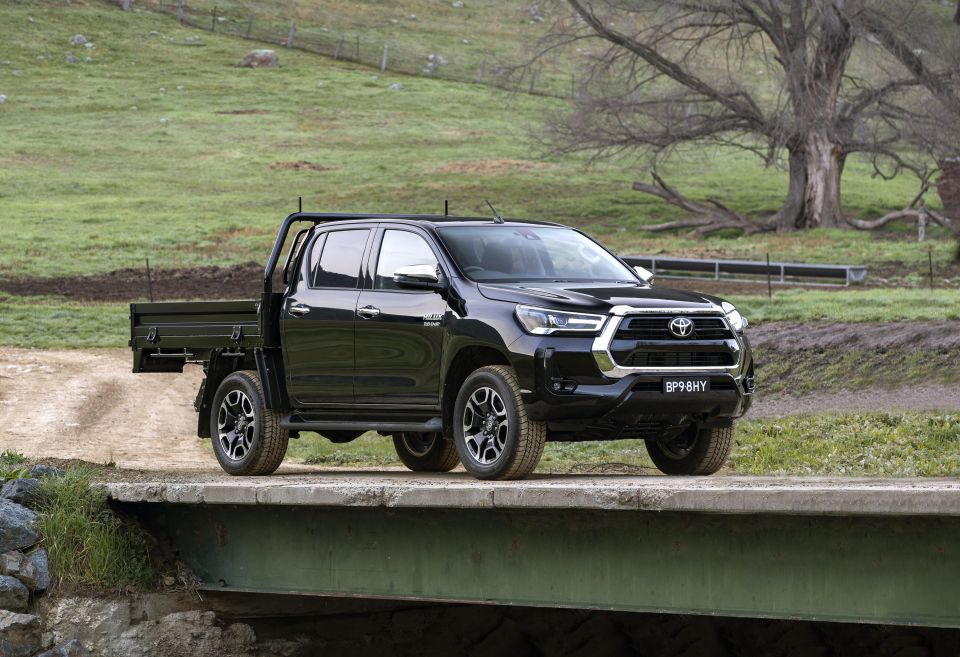
The inner wheels that inherently turn at a slower speed are trying to turn on a sealed surface, which results in strain on the driveline.
So the advice is to only engage high- or low-range four-wheel drive, or the rear differential lock, when you’re on unsealed surface that offer some degree of wheel slip.
Off-road driving can be heaps of fun. But take the time to understand the basics of your vehicle before heading off road.
These tips above are just the start. You need to think about things like tyres, tyre pressures, recovery points and underbody protection if you’d like to do a proper off-road trip or if you’ll be doing this regularly.
Feel free to share any other tips or tricks you’ve come across off road in the comments section below.
Where expert car reviews meet expert car buying – CarExpert gives you trusted advice, personalised service and real savings on your next new car.
Paul Maric is a CarExpert co-founder and YouTube host, combining engineering expertise with two decades in automotive journalism.


Paul Maric
1 Month Ago
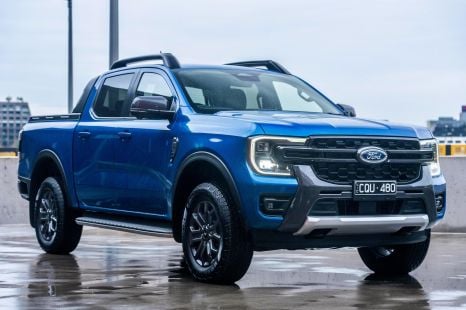

Max Davies
28 Days Ago
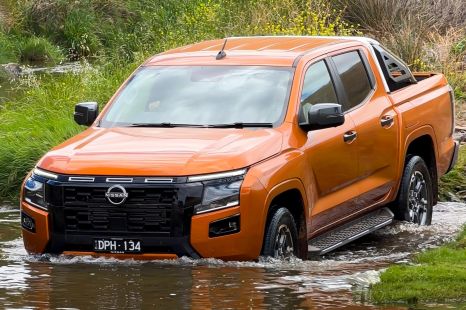

James Wong
18 Days Ago
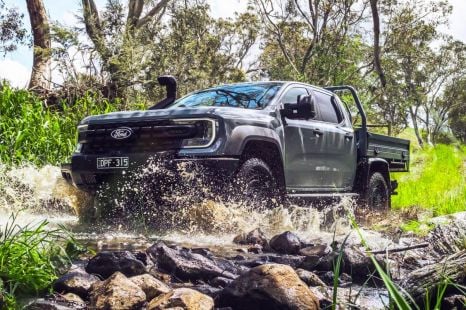

Ben Zachariah
17 Days Ago
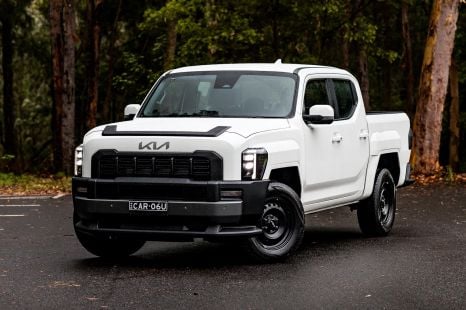

Matt Campbell
9 Days Ago


Ben Zachariah
2 Days Ago